
Foto di proprietà dell'autore
LA RIVISITAZIONE DI UN GRANDE CLASSICO |
|---|
Con questo post mi unisco anche io al concorso The best food post, ideato dai sempre brillanti ragazzi di @italygame che amministrano la nostra community, giunto alla settima settimana. Come sappiamo, la buona cucina è uno degli elementi che caratterizzano il nostro Paese in giro per il mondo, tanto che alcune ricette sono state esportate in ogni angolo del globo e a volte modificate per venire incontro ai gusti delle culture locali.
Quello che vi propongo io oggi è una rivisitazione della classica "carbonara", secondo lo stile utilizzato dalla mia mamma, che ne alleggeriva alcuni tratti caratteristici per renderla più compatibile con il nostro palato di bambini. Invece che servirla su un bel letto di spaghetti fumanti però, ho scelto di adagiarla su due focaccine fatte in casa, per creare un piatto alternativo.
Ovviamente chiedo scusa in anticipo a tutti gli amici della zona di Roma per le numerose rivisitazioni apportate ad uno dei piatti tipici della loro cultura locale, spero vogliate ancora rivolgermi la parola dopo questo post... Scherzi a parte, ecco di seguito il procedimento che ha portato alla realizzazione del piatto:
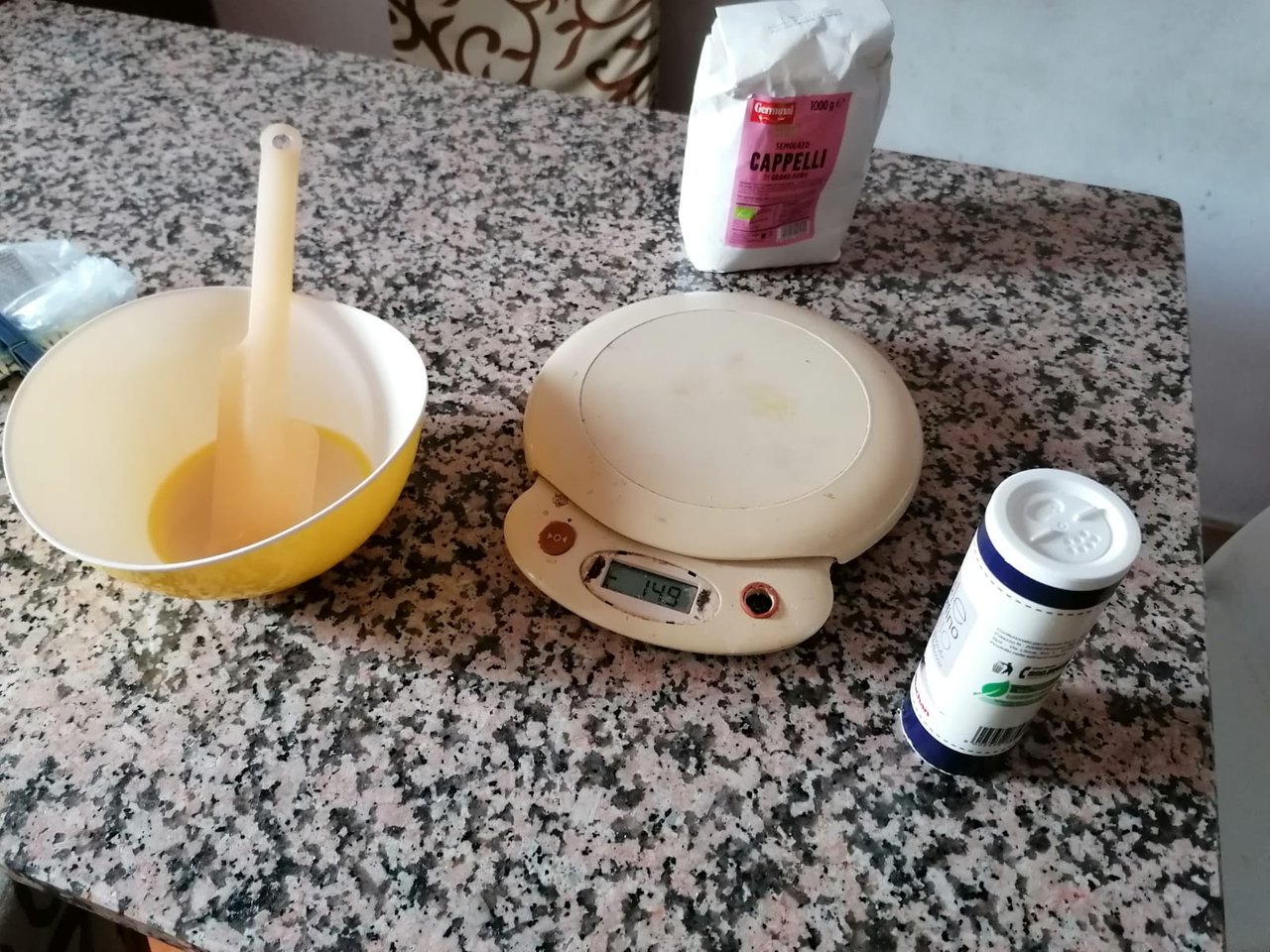
Foto di proprietà dell'autore
INGREDIENTI
- 100 gr. di farina Senatore Cappelli
- Un paio di cucchiaini di olio extravergine d'oliva
- 60 ml d'acqua tiepida
- 3 gr. di sale
- 1-2 gr. di lievito fresco
- Mezzo cucchiaino di zucchero
PROCEDIMENTO
Sciogliamo il lievito nell'acqua, aggiungendo l'olio e lo zucchero, che serve a favorire la lievitazione. Successivamente versiamo nella miscela la farina, iniziando a mescolare, per poi unire il sale. Per questa ricetta ho utilizzato una farina di grano duro tipo Senatore Cappelli, derivata da grani antichi, contenente meno glutine e di conseguenza più digeribile. Costa un po' di più delle normali farine, ma credo ne valga la pena.
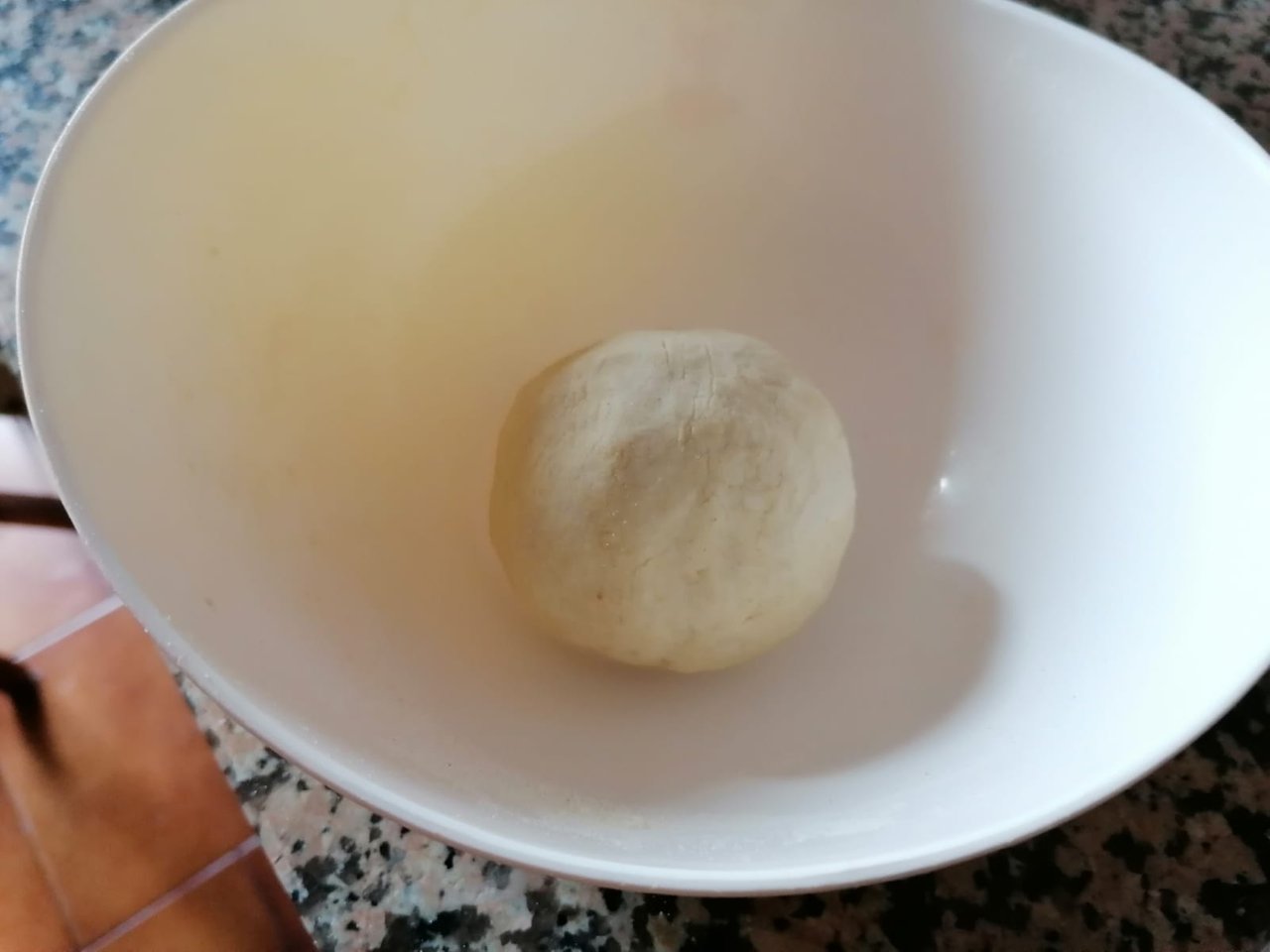
Foto di proprietà dell'autore
Impastiamo tutto per una decina di minuti, fino ad ottenere una pallina, liscia ed elastica. Generalmente l'impasto è pronto quando schiacciando leggermente con un dito un qualsiasi punto, lo stesso riesce a riprendere la forma originale. Ora lasciamo lievitare per qualche ora, coprendo la ciotola con una pellicola trasparente, che non permetta all'aria di passare.
L'ambiente ideale per la lievitazione è all'interno del forno, tenuto naturalmente spento, ma con la sua lucina accesa, in modo da creare una temperatura interna tra i 35 e i 40 gradi.
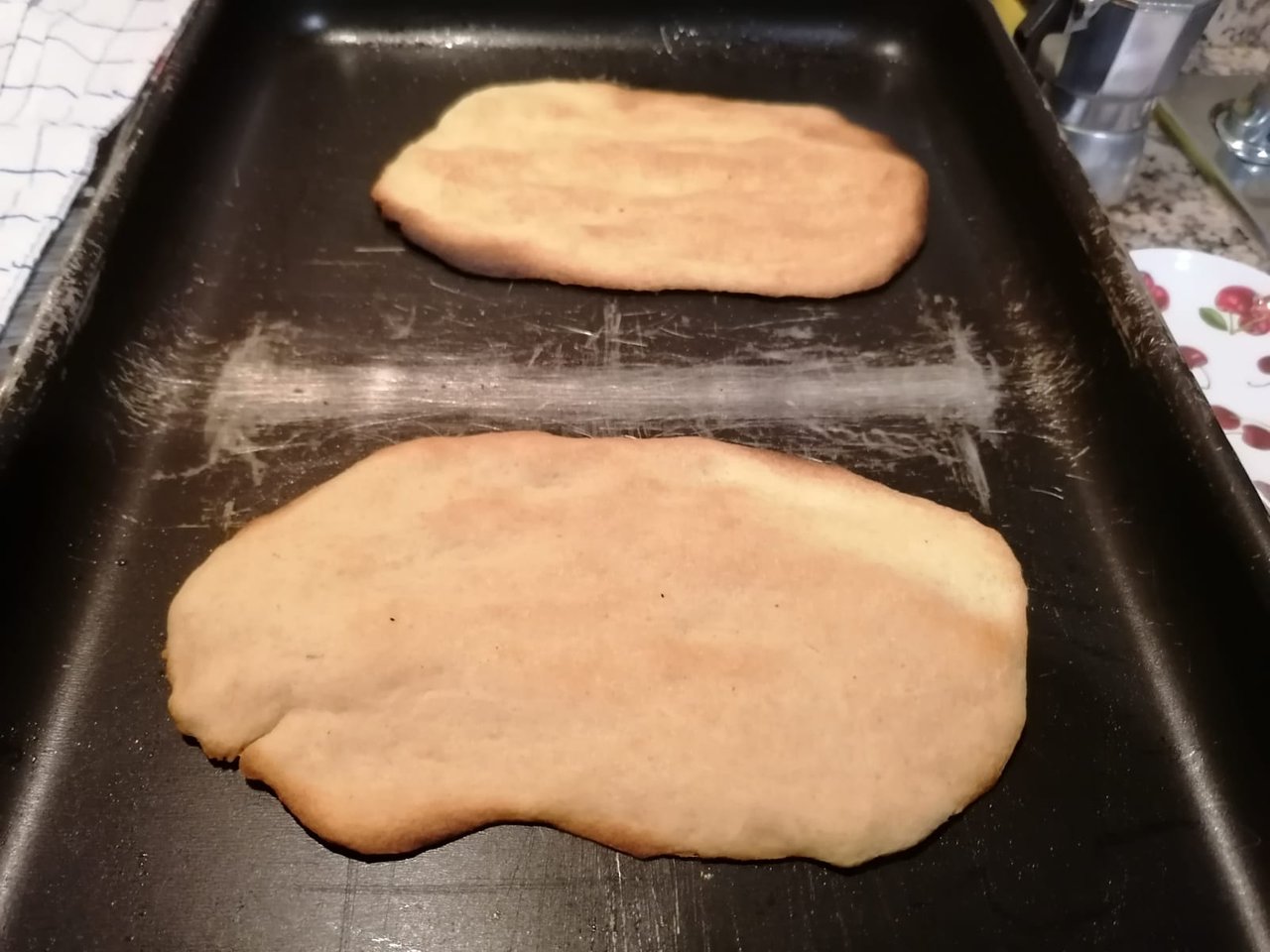
Foto di proprietà dell'autore
Trascorse le ore della lievitazione, dividiamo la pallina in due e cominciamo ad allargarle delicatamente con le dita, in modo da creare due piccole focacce. Adagiamole su di una teglia, leggermente unta d'olio (possibilmente anche migliore di quella che ho usato io, reduce da mille "battaglie"), spennelliamo d'olio anche la superficie e inforniamo a 250° utilizzando la funzione pizza.
La cottura varia in base al grado di croccantezza desiderato: cinque minuti, se la volete più morbida, un minuto in più se, come me, la preferite ben cotta.
INGREDIENTI
- 100 gr. di pancetta a cubetti
- Un uovo
- Olio extravergine d'oliva
- Sale
- Pepe
- Parmigiano grattugiato
PROCEDIMENTO
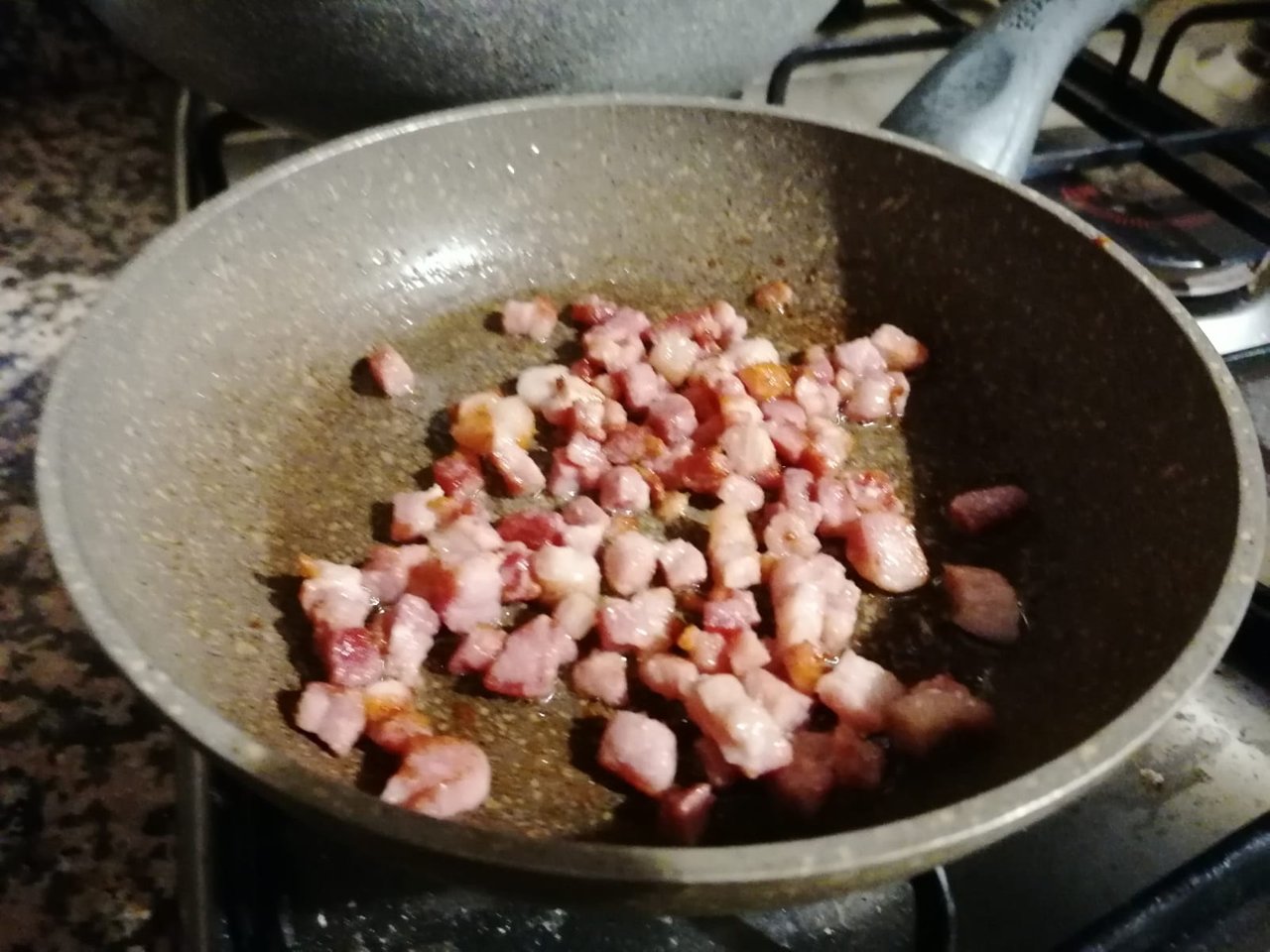
Foto di proprietà dell'autore
Per condire la nostra focaccia, in stile "carbonara", sbattiamo un uovo in una ciotola e aggiungiamo un pizzico di sale. Dopodiché versiamo un filo d'olio extravergine d'oliva in una padella e dopo aver scaldato a fuoco medio versiamo la pancetta a cubetti. La versione originale della carbonara credo preveda il guanciale: se lo trovate, meglio, se no, anche con la pancetta si può ottenere una versione apprezzabile.
Facciamo rosolare la pancetta a fuoco medio, fin quando non cambia colore, poi aggiungiamo l'uovo e spegniamo il fuoco. Il calore della pancetta farà rapprendere leggermente l'uovo, e una volta pronto stendiamo tutto sulla focaccia, grattugiando sopra un po' di Parmigiano (anche in questo caso credo la ricetta originale preveda il Pecorino romano, ma dalle nostre parti non è facile da trovare) e spolverando con il pepe.
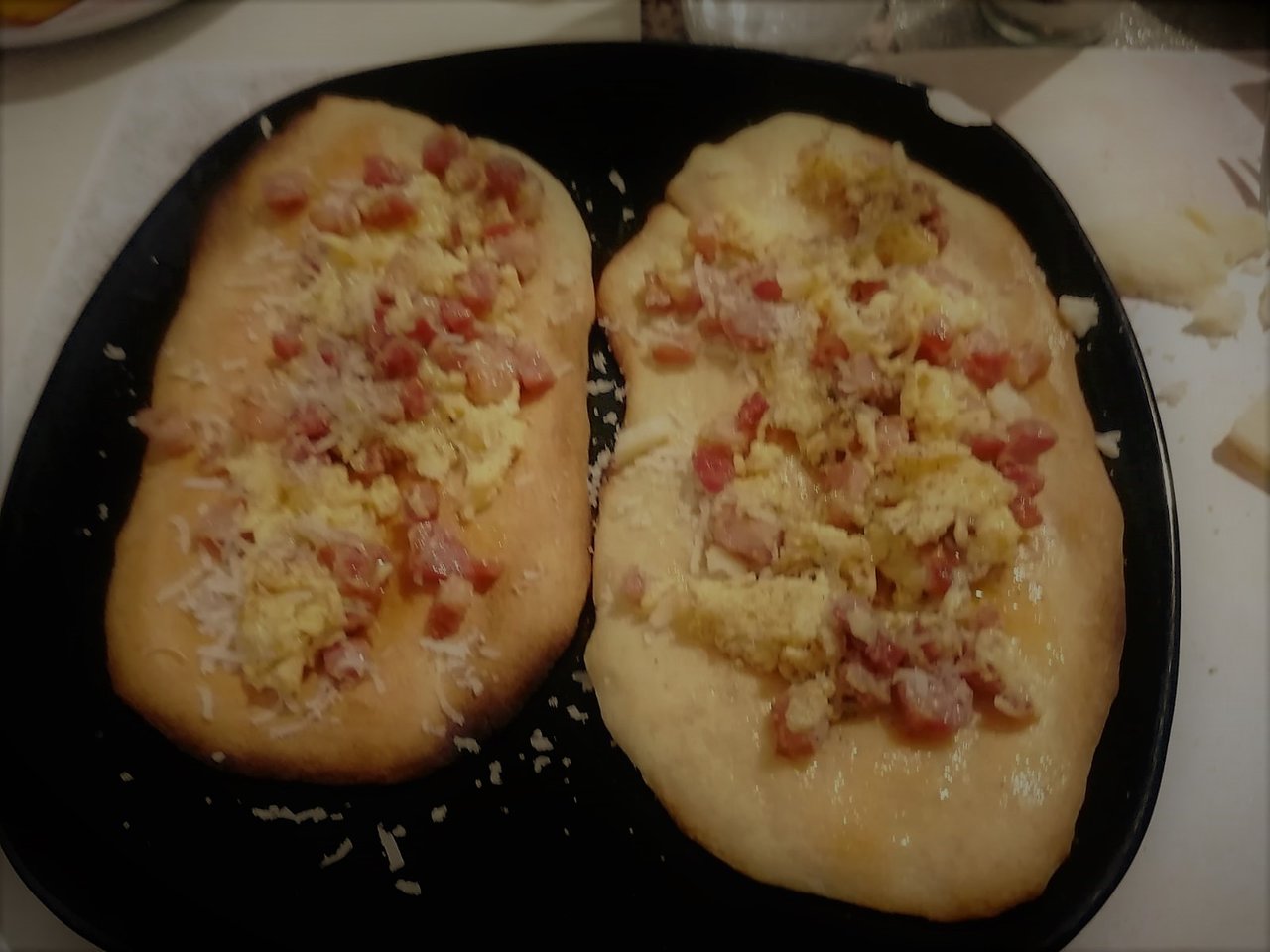
Foto di proprietà dell'autore
Se la ricetta vi è piaciuta, lasciate un bel commento; in caso contrario, fate come sono soliti fare i tifosi del Torino dopo i derby, cioè fingete che il tutto non sia mai accaduto 😉.
 ENGLISH VERSION
ENGLISH VERSION
Translated with DeepL.com
REVISITING A GREAT CLASSIC |
|---|
With this post I also join the contest The best food post, created by the ever-brilliant @italygame guys who administer our community, now in its seventh week. As we know, good food is one of the elements that characterises our country around the world, so much so that some recipes have been exported to every corner of the globe and sometimes modified to meet the tastes of local cultures.
What I am proposing today is a reinterpretation of the classic 'carbonara', in the style used by my mother, who lightened some of its characteristic traits to make it more compatible with our children's palates. Instead of serving it on a nice bed of steaming spaghetti, however, I chose to lay it on two homemade scones, to create an alternative dish.
Obviously I apologise in advance to all my friends in the Rome area for the numerous revisions made to one of the typical dishes of their local culture, I hope you will still want to talk to me after this post... Joking aside, here is the process that led to the creation of this dish:

Photo owned by the author
INGREDIENTS
- 100 g of Senatore Cappelli flour
- A couple of teaspoons of extra virgin olive oil
- 60 ml lukewarm water
- 3 g salt
- 1-2 g fresh yeast
- Half a teaspoon of sugar
PROCEDURE
We dissolve the yeast in the water, add the oil and sugar, which serves to promote rising. Next, we pour the flour into the mixture, start mixing, and then add the salt. For this recipe I used a durum wheat flour type Senatore Cappelli, derived from ancient grains, which contains less gluten and is therefore more digestible. It costs a bit more than normal flours, but I think it is worth it.

Photo owned by the author
Knead everything for about ten minutes, until a smooth, elastic ball is obtained. Generally, the dough is ready when you lightly press any point with your finger and it regains its original shape. Now leave it to rise for a few hours, covering the bowl with cling film, which does not allow air to pass through.
The ideal environment for leavening is inside the oven, kept off of course, but with its light on, so as to create an internal temperature of between 35 and 40 degrees.

Photo owned by the author
After the rising time has elapsed, we divide the ball in two and begin to gently spread them out with our fingers, so as to create two small buns. We place them on a baking tray, lightly greased with oil (possibly even better than the one I used, after a thousand 'battles'), brush the surface with oil and bake at 250° using the pizza function.
The baking time varies according to the desired degree of crispness: five minutes if you want it softer, an extra minute if, like me, you prefer it well cooked.
INGREDIENTS
- 100 g of diced bacon
- One egg
- Extra virgin olive oil
- Salt
- Pepper
- Grated Parmesan cheese
PROCEDURE

Photo owned by the author
To season our focaccia, carbonara style, we beat an egg in a bowl and add a pinch of salt. Then we pour a drizzle of extra virgin olive oil into a frying pan and after heating over medium heat we pour in the diced bacon. The original version of carbonara I believe calls for guanciale (pork cheek): if you can find it, better, if not, even with pancetta you can get a palatable version.
We brown the bacon over medium heat until it changes colour, then add the egg and turn off the heat. The heat of the bacon will cause the egg to congeal slightly, and once it is ready we spread it all over the focaccia, grating a little Parmigiano on top (again, I believe the original recipe calls for Pecorino Romano, but in our parts it is not easy to find) and sprinkle with pepper.

Photo owned by the author
If you liked the recipe, leave a nice comment; if not, do as Torino FC fans are wont to do after derbies, i.e. pretend the whole thing never happened 😉.


